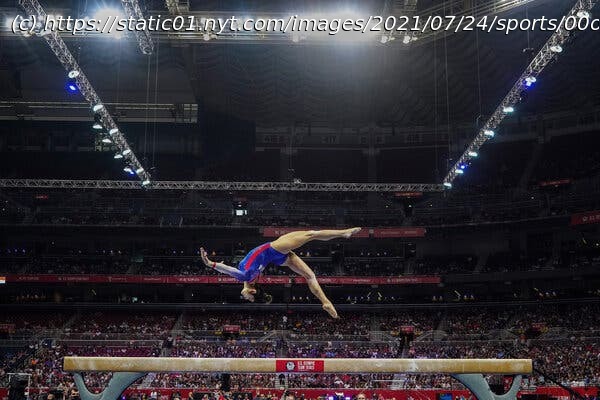Want to follow the women’s gymnastics competition in Tokyo, but don’t understand the skills or how they’re scored? Here’s a guide.
Women’s gymnastics is a marquee sport at the Summer Olympics, but otherwise doesn’t get much attention outside a dedicated group of fans. I’m one of those fans, as well as a former (decidedly not Olympic-caliber) gymnast, and I’m here to help you watch with a more discerning eye. Do you want to know what’s required on each apparatus? Which skills are hardest? How to tell good routines from great? You’re in the right place. Here, we will look at the balance beam — starting with the basics and then moving into technical details. You can choose a quick primer or go as deep as you want. We also have guides to the vault, the uneven bars and floor exercise. The beam is 16 feet long, four feet high and four inches wide — the width of a coronavirus vaccination card. The lack of room for error on the beam makes the finals (which will include the top eight gymnasts from the qualifications round, with a maximum of two per country) unpredictable, because a tiny miscalculation can knock out even the best gymnast. Every routine must include: In the best beam routines, the gymnast will have no wobbles and, of course, no falls. (In reality, small balance checks are common.) Judges also deduct for things like body form and excessive pauses between skills. Every skill has a difficulty rating from A through H. Gymnasts get credit for their eight hardest skills, of which at least three must be acrobatic and three must be dance. Many gymnasts do simple mounts like splits (A), squat-throughs (A, basically a jump into a seated position) or handstands (B), and save the difficult skills for later. Two harder (D-rated) but still common mounts are switch leaps — in which the gymnast uses a springboard to leap into a split, switching the direction of her legs in midair — and candles, in which she stands alongside the beam with her back to it, dives backward and lands upside down with arms wrapped around it. Mounts involving flips, like a back layout step-out or a front pike (both E), are riskier and rarer.






